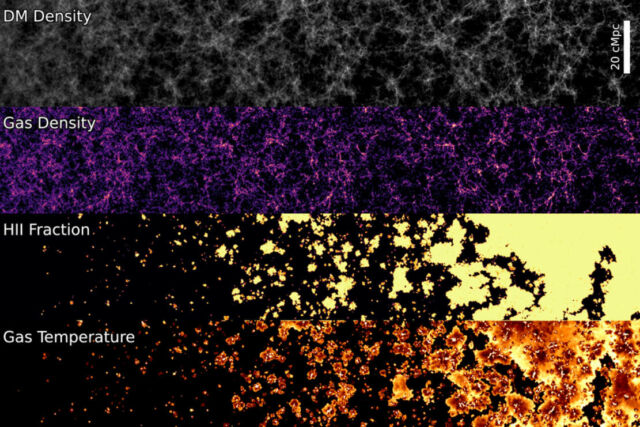Scientists develop the largest, most detailed model of the early Universe to date, immediately after the Big Bang.
Thesan simulation of gas and radiation evolution shows rendering of the neutral hydrogen gas.
Colors represent density and the brightness, revealing the patchy reionization structure within a network of high-density neutral-gas filaments.
Named after a goddess of the dawn, the Thesan simulation of the first billion years helps explain how radiation shaped the early universe.
It all started around 13.8 billion years ago with a big, cosmological “bang” that brought the universe suddenly and spectacularly into existence. Shortly after, the infant universe cooled dramatically and went completely dark.
Then, within a couple hundred million years after the Big Bang, the universe woke up, as gravity gathered matter into the first stars and galaxies. Light from these first stars turned the surrounding gas into a hot, ionized plasma — a crucial transformation known as cosmic reionization that propelled the universe into the complex structure that we see today.
Now, scientists can get a detailed view of how the universe may have unfolded during this pivotal period with a new simulation, known as Thesan, developed by scientists at MIT, Harvard University, and the Max Planck Institute for Astrophysics.
source MIT






Leave A Comment